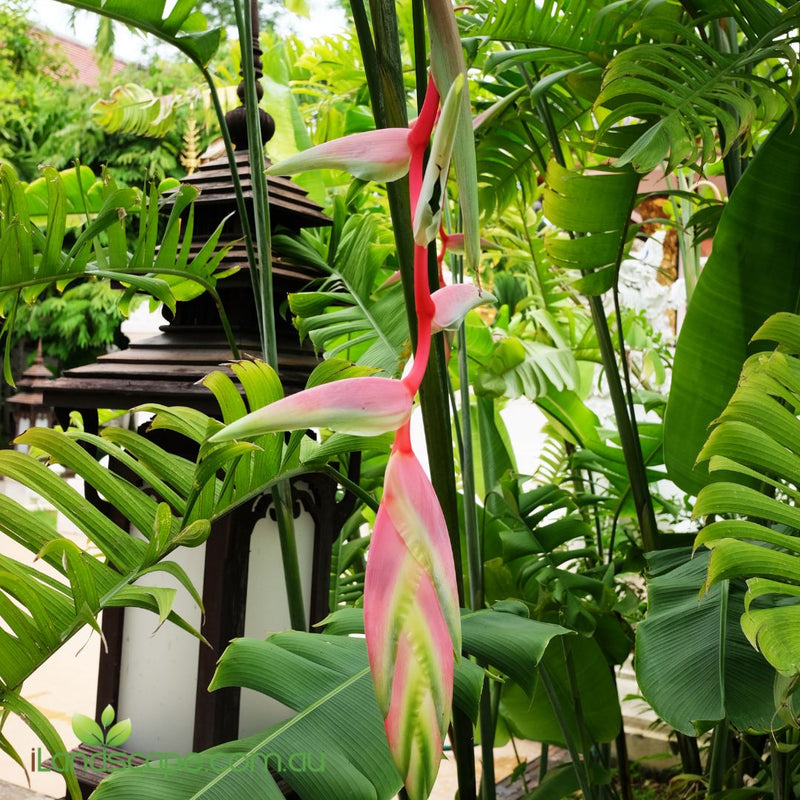
Top 10 Must-Have Tropical Plants for Queensland Gardens

Description:
Chanticleer Callery Pear (Pyrus calleryana 'Chanticleer') is a popular deciduous ornamental tree known for its upright, pyramidal form, stunning spring blossoms, and vibrant fall foliage. This cultivar is highly valued for its compact shape and resistance to common diseases, making it a low-maintenance choice for urban landscapes, parks, and residential gardens.
Flowers:
In early spring, 'Chanticleer' produces abundant clusters of small, white, fragrant flowers that blanket the branches. These blossoms create a striking display, attracting pollinators and adding significant ornamental value to the tree.
Foliage:
The tree has glossy, dark green leaves that create a dense, lush canopy through spring and summer. In autumn, the foliage turns brilliant shades of red, orange, and purple, providing a colorful seasonal display that adds warmth and interest to the landscape.
Fruit:
After flowering, 'Chanticleer' may produce small, rounded, inedible fruits that mature in late summer to autumn. These fruits are inconspicuous and serve primarily as a food source for birds and wildlife.
Form and Size:
Chanticleer has a narrow, upright, pyramidal form, typically reaching a height of 11 to 13 meters with a spread of 3 to 4 meters. Its columnar shape makes it well-suited for narrow spaces, as well as for use as a vertical accent in mixed plantings or along streets.
Growing Conditions:
This tree thrives in full sun and is adaptable to a wide range of soil types, including clay, loam, and sandy soils, as long as they are well-draining. It is drought-tolerant once established and highly resistant to pollution, making it ideal for urban environments.
Uses:
'Chanticleer' is versatile in landscaping, often used as a street tree, privacy screen, or as a specimen in garden beds and mixed borders. Its compact shape, beautiful flowers, and autumn color make it an excellent choice for urban landscapes, adding structure and seasonal beauty to various settings.
Maintenance:
This tree is relatively low-maintenance, requiring minimal pruning to maintain its shape. Light pruning in winter or early spring can help remove any dead or crossing branches. Chanticleer is resistant to fire blight and other common diseases, making it a resilient choice for low-maintenance landscapes.
Notes:
Chanticleer Callery Pear is prized for its adaptability, upright form, and multi-seasonal appeal. Its compact shape and vibrant autumn foliage make it a favorite among gardeners and landscapers seeking an elegant, disease-resistant tree for urban and residential spaces.
Companion Plants:
Pairs well with other upright or columnar trees and shrubs, such as Juniperus (Juniper) and Taxus (Yew). It also complements ornamental grasses and low-growing perennials like Hostas, Sedums, and Heuchera, creating a layered, contrasting effect in garden beds.
Common Name: Chanticleer Callery Pear
Botanical Name: Pyrus calleryana 'Chanticleer'
Family: Rosaceae
Origin: China
As we cannot guarantee stock all year around on Pots & Plants please hit us up via the chat button and we can get back to you with availability
Quantity:
Usually ready in 24 hours —
Delivery Options
Product Availability
Plants & Pots come and go all year around.
Where are our plants Grown and how do we grow them
How to Look after your plants like we do
